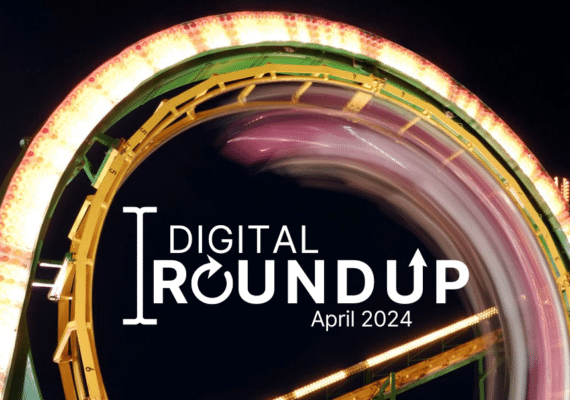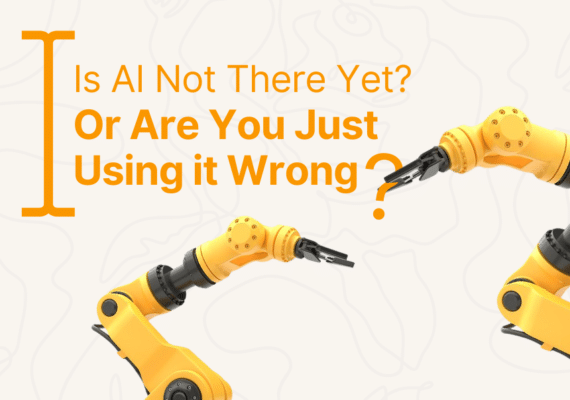Digital marketing is a challenging proposition for charities. It is a vital tool that lets you communicate directly with your target audience at the moments that matter. Website, social media channels, and email are some of the online marketing platforms that charities can use to raise funds. However, the biggest challenge is that advertising online costs money which is where charities struggle the most compared. To raise awareness for their cause without spending money can seem daunting and impossible.
Many NGOs we’ve worked with in the past have expressed these challenges but show a desire for reaching and converting audiences online. With these challenges in mind, in this blog post, we discuss simple steps to getting started with digital marketing for your charity organization.
Contents
Digital Strategy
In order to make online marketing work for you and translate to donations, you need a plan of action. This is where a digital strategy comes into play. Rather than blindly jumping on the social media bandwagon as it seems to be the more popular choice, it would help to have strong foundations in place first! This includes knowing and understanding your audience and using these insights to shape your digital marketing efforts.
Understand Your Audience
Knowing your ideal target audience and what action you want them to take is very important and should be your starting point. This will help you create highly targeted campaigns for different audience personas and help improve the conversion rate for your campaigns.
Identify the aspirations, motivations, and needs of your existing donors which can form a baseline for you to chalk out a content plan for potential donors. An excellent model to help you create the right messaging for the different personas is the see-think-do-care model. Use this model to update your website with content for informing, guiding and persuading people to donate for your cause depending on which stage of the journey they are at.
Use your existing analytics platforms to gather as much information as possible about website visitors. This includes information like age, gender, location, pages visited, content consumed, actions taken on the website, etc. Don’t forget to also collect information from social channels and their analytics platforms if you already have a presence on social media.
Update Your Website To Meet Your Goals
Once you have identified your ideal target audience, the first step for you should be to build a website or update your existing one to make sure that your website communicates the write message. You want your website to communicate clearly about you and the cause you stand for.
The website should also be optimized for conversions. This means for every user who comes to your site, it should be clear what final action you want them to take on your site ( for eg: make a donation). The website navigation and layout should simplify the user journey and help to improve conversions.
Another important aspect of having a website is that it needs to be found easily when someone is searching on a search engine like Google. This is where SEO or search engine optimization comes in. A lot of people would be searching on Google, Bing and other search engines for similar causes or for your brand. Spend some time researching your most important keywords and make sure your website has content to cater to those keywords to help you get in more people to visit your site from search engines.
Make sure your site is optimized for mobile. With Google giving more weightage to mobile-optimized sites in search, it would be a good idea to check for mobile usability issues and mobile speed for your website.
Some useful links:
- Test/improve website speed: Google Pagespeed Insights – gives some fantastic advice. Simply copy/paste your website, download the resources and install them on your website.
- Test mobile-friendliness: Google Mobile-Friendly Test – is also a fantastic insight tool that you can copy/paste your website into.
Use Social Media
For NGOs, social media is an excellent tool. Social media channels help you reach out to a wider audience. Twitter or Facebook is a great place to start and to build a following. You can start conversations with other like-minded groups, organizations, and influencers. If you provide value to these while staying true to your mission, you should start to gain followers that you can further interact with. Be sure to read our blog posts on using Twitter to attract followers and improve engagement and how to create a social media strategy.
You do not have to post serious stuff all the time. Try to post a mix of serious, interesting, engaging or fun content to keep your fans interacting with you at all times. This can be content from your own website or from some external website ( make sure to credit the source).
Have a content plan in place so you don’t miss out on important national or international days and have a steady stream of posts on your pages throughout the week.
There are some great guides for how you can use Facebook at facebook.com/business
There is a great list of how you can use Twitter at business.twitter.com/basics
Create Shareable Content
Video
Video marketing is a powerful way to evoke emotions and create empathy for your cause. Storytelling through video helps establish a powerful connection with your audience and can move them to support your cause if done in the right way.
Some important video statistics:
- “Almost 5 billion videos are watched on YouTube every day.”
- “The average person watches more than an hour and a half of online video content per day, with around 15% averaging more than three hours.”
- “Video in an email leads to a 200-300% increase in click-through rates.”
- “Including video on a landing page can increase conversion by 80%.” Source
YouTube Social Impact is the YouTube for Non-Profit Program, which provides free tools for charitable organizations to connect with a vast, engaged audience of supporters, volunteers, and donors.
Blogs
Blogging is a great way for charities to talk about topics that matter to their cause. It also shows your expertise and helps keep visitors informed of things your charity has been up to. Blog content is also a great way to stay relevant and is also important for SEO and for search engines and shows that you are providing relevant valuable information from time to time.
Email Newsletter
If you find that visitors are interacting with the content you are creating/posting, now is the time to start collecting email addresses for a monthly newsletter. Add a box on your website that encourages visitors to sign-up for monthly insights into your organization’s mission/goals and, ultimately, will provide them value. Once you have a couple of dozen subscribers, use MailChimp (free to up to 2,000 subscribers) to create and send monthly newsletters, designed to keep subscribers up-to-date and encourage them to complete your key action (e.g. donation).
However, it’s important to remember that there is not just one type of email. You need to consider different journeys and the messaging that is suitable for each of these.
This can include welcome emails for those who have just signed up for your email list or for those who have started donating. Emails can nurture people toward making donations or thank them for already doing so. You can also use them to keep people informed of what you’re doing and to continue telling your story.
All of this means you need a documented email marketing strategy that shows various email journeys.
Other Platforms
Google Ad Grants for Non-profit Organisations
This works just like Google Ads online advertising, by displaying your message to people who are searching for nonprofits like yours. If you’re a qualifying nonprofit, you’ll receive $10,000 USD worth of Google Ads advertising in-kind every month to Attract donors, raise awareness for your organization and recruit volunteers on Google Search.
Google Ads search ads appear next to Google search results when people search for nonprofits such as yours. And it includes powerful tools to help you create, target and optimize your campaigns. So you’ll always have complete control of your campaigns.
The world’s biggest retailer offers a way for shoppers to donate 0.5% of their eligible purchases to almost any charity they desire. There are almost one million to choose from.
This service is entirely free for charities that sign up to the scheme. Joining the AmazonSmile program gives you free access to a global network of potential supporters and the chance to increase your awareness across a diverse audience of consumers.
To make it easier for you and your community to raise money on Facebook, it offers free tools to help you collect donations and enable supporters to fundraise for your charity. Some of these include the page fundraisers and the “Donate” button. Your charity can now raise money directly from your Facebook Page with the donate button and Page fundraisers.
Charities using Facebook’s payment platform to process donations pay no fee – 100 per cent of the donations go to the charity.
Create – Measure – Improve
Now you should be at the point where you are creating blog posts on a monthly/fortnightly/weekly/biweekly basis, sharing them on social media and in your monthly newsletter. The next, on-going step is to constantly analyze the performance of your website and social/email channels, and improve them accordingly. We have plenty of helpful blog posts on this topic and this should be carried out with the intention of providing more value to your website’s visitors and, ultimately, persuade them to complete the desired action (e.g. donate).






